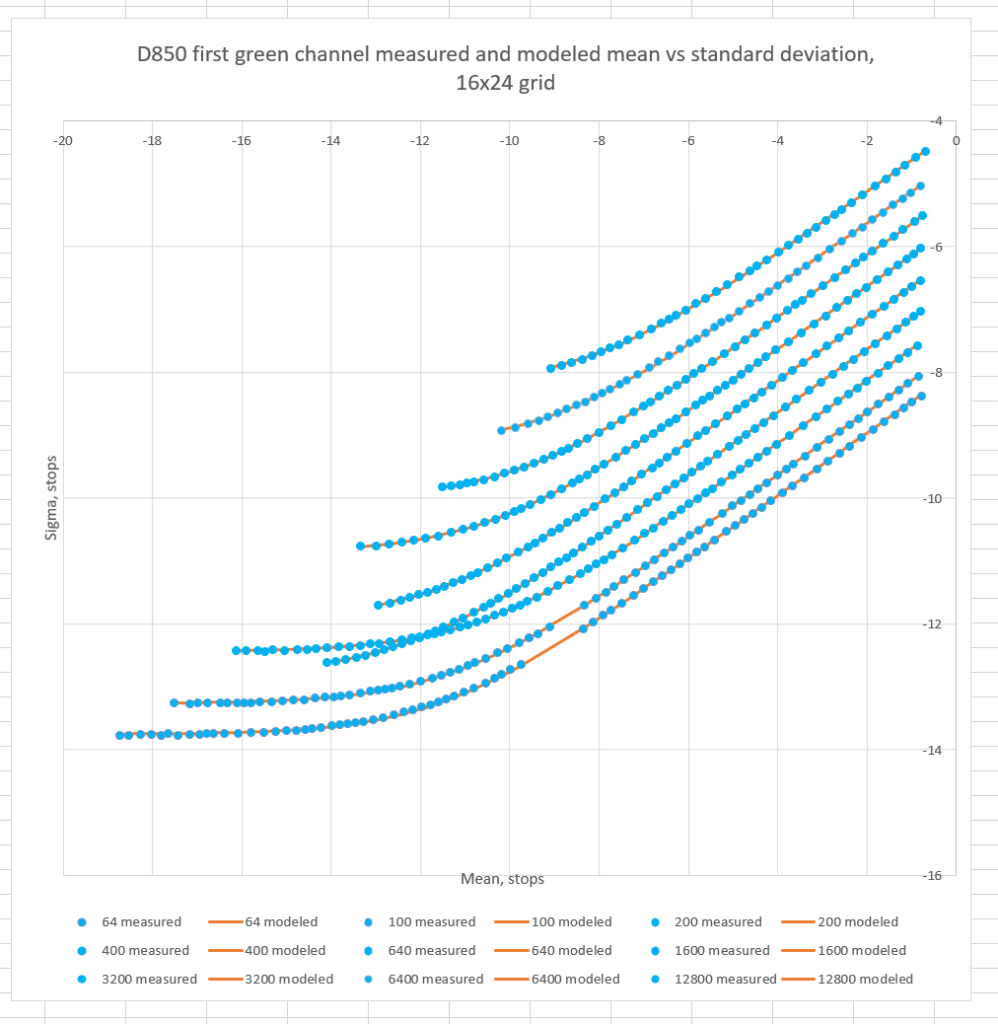This is a continuation of a series of posts on the Nikon D850. You should be able to find all the posts about that camera in the Category List on the right sidebar, below the Articles widget. There’s a drop-down menu there that you can use to get to all the posts in this series. You can also click on the “D850” link in the “You are here” line at the top of this post.
In this post, I showed you a photon transfer curve (PTC at ISO 64) for the D850. Here are a set of those curves at various ISO settings:
As I mentioned yesterday, I’ve gotten lots of help from Mark, Bill Claff, Jack Hogan, and Joofa. Thanks to them, I’ve written code to detect and measure prescaling gain in cameras, and have corrected the full well capacities (FWCs) using that information. The D850 does not prescale the two gree channels, but it digitally amplifies the red channel by 1.1636 and the blue one by 1.1317.
You can see the read noise drop at ISO 400 and above.
Here are my new FWC numbers:
These FWCs are referred to base ISO. Here’s what that means: it is possible to look at a PTC at any ISO, and, if you know that ISO and the base ISO, estimate what the FWC is at base ISO, and that’s what I did. As the ISO level increases to the point where the RN makes estimating the photon noise more difficult, the estimated FWCs become less accurate. Therefore, it is a useful check on the data and whether the correct model has been chosen to estimate base-ISO FWC from data sets derived at as many ISOs as practical. In a perfect world, they would all yield the same number.
As was the case with the a7RIII, there is a small sawtooth pattern. I now suspect that this has something to do with the cameras’ changing the gain in true 1/3 stop steps as opposed to the rounded ones in the standard ISO scale.
And here is the input referred read noise (RN):
I don’t know what’s causing the RN to rise at the transition from ISO 1250 to ISO 1600. The increase is sufficiently small that it’s probably of only academic interest. The drop at ISO 6400 and above is likely due to hot pixel suppression.
Looking at the histograms of the two ISOs shows no change in Nikon’s digital gain strategy.
So that’s not it.





Horshack says
Jim, how are you determining the saturation point (in DNs) at each ISO for the FWC calculations?
JimK says
Pretty grossly: 2^precision – 1 – blackpoint.
Horshack says
That’s probably fine. I just checked on my D810 and it clipped at 2^14 – blackpoint for each ISO between 200 and 400. You may want to verify the same is true for the D850/A7rIII.